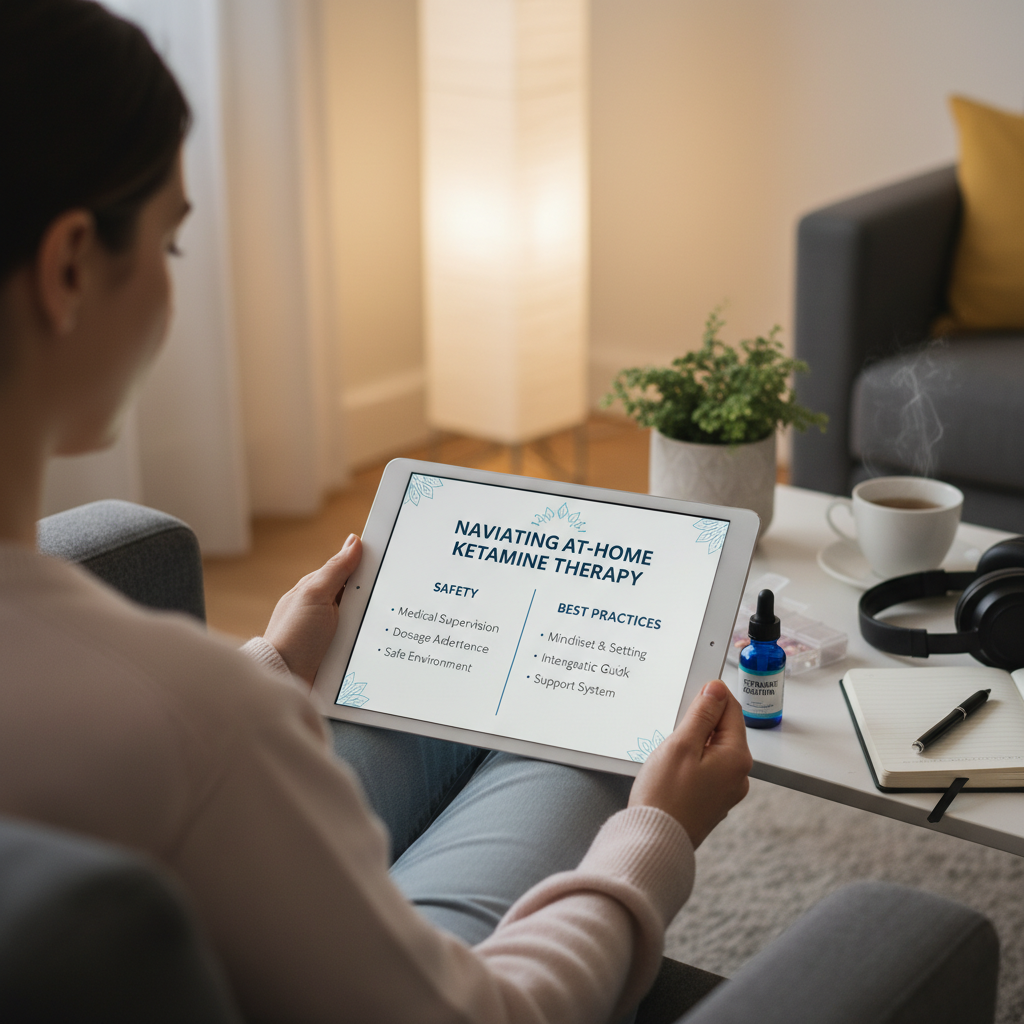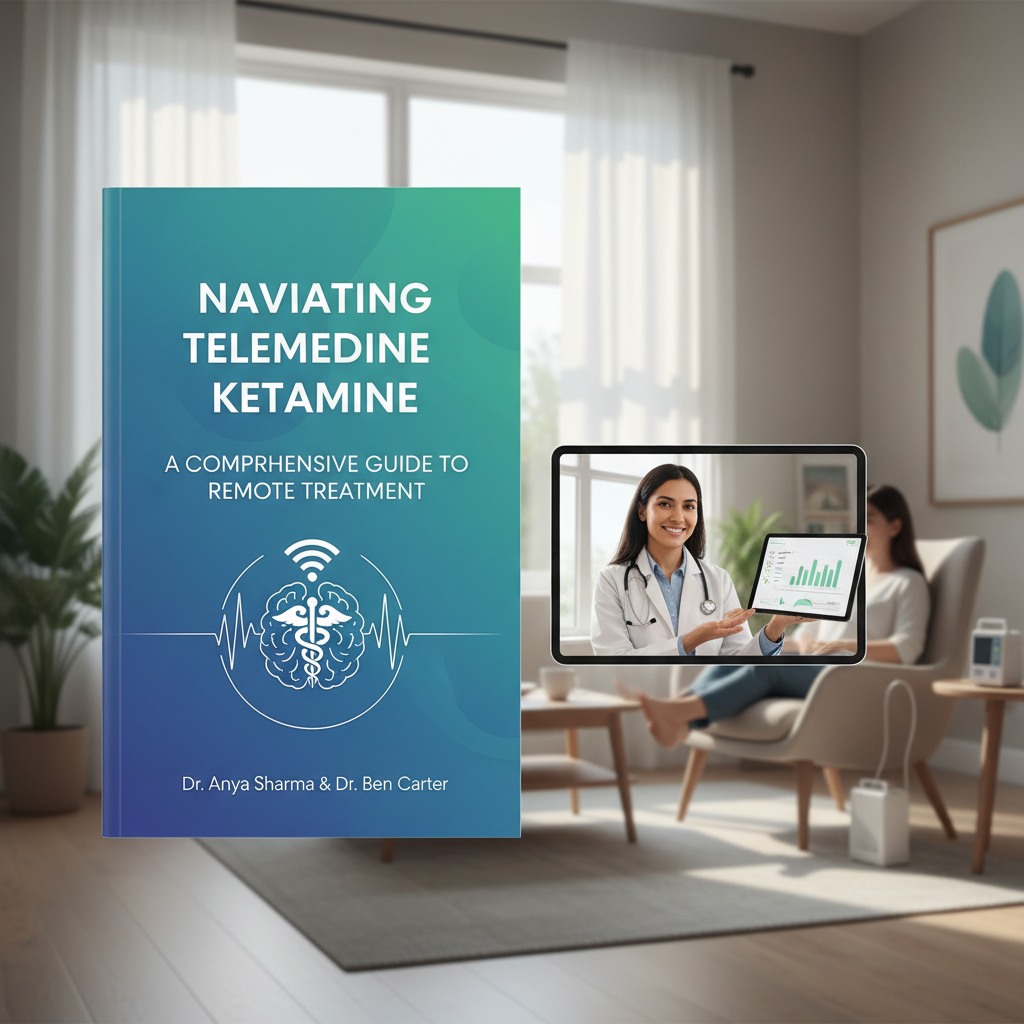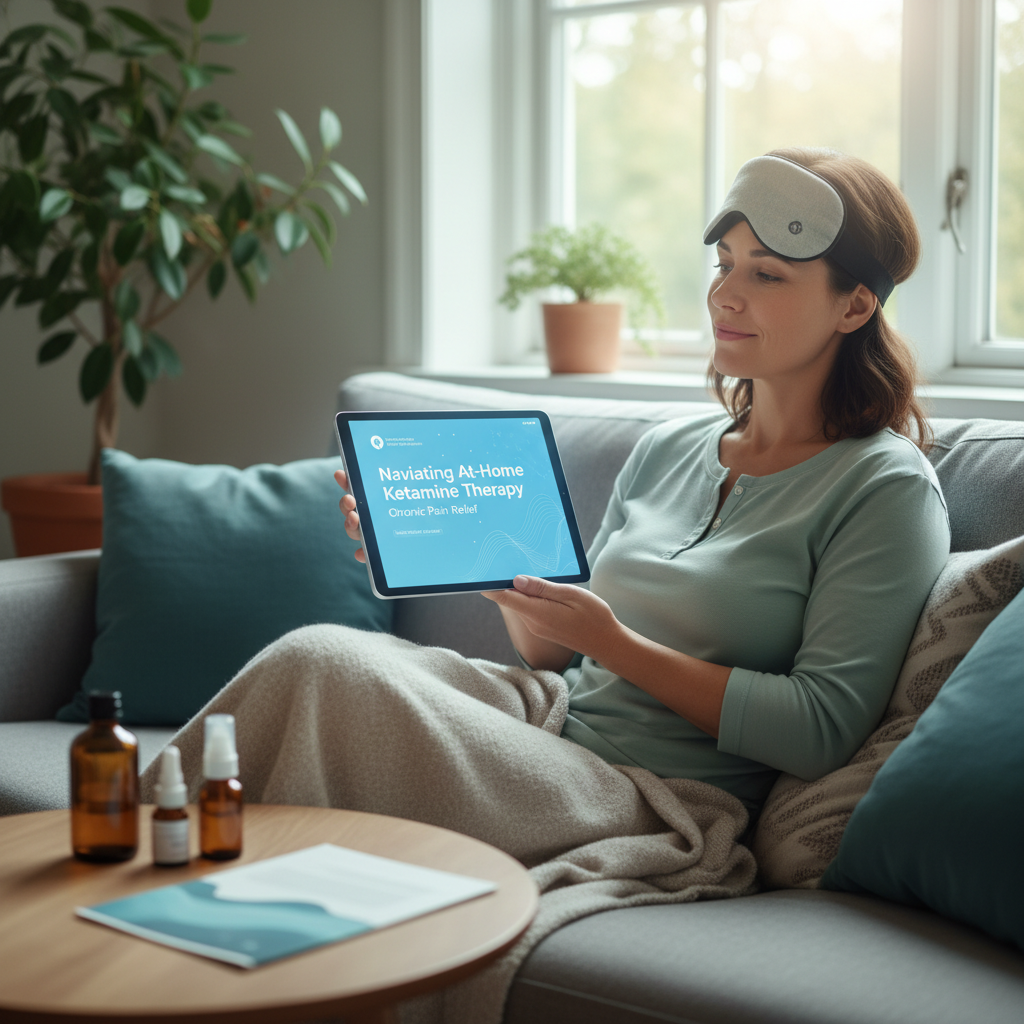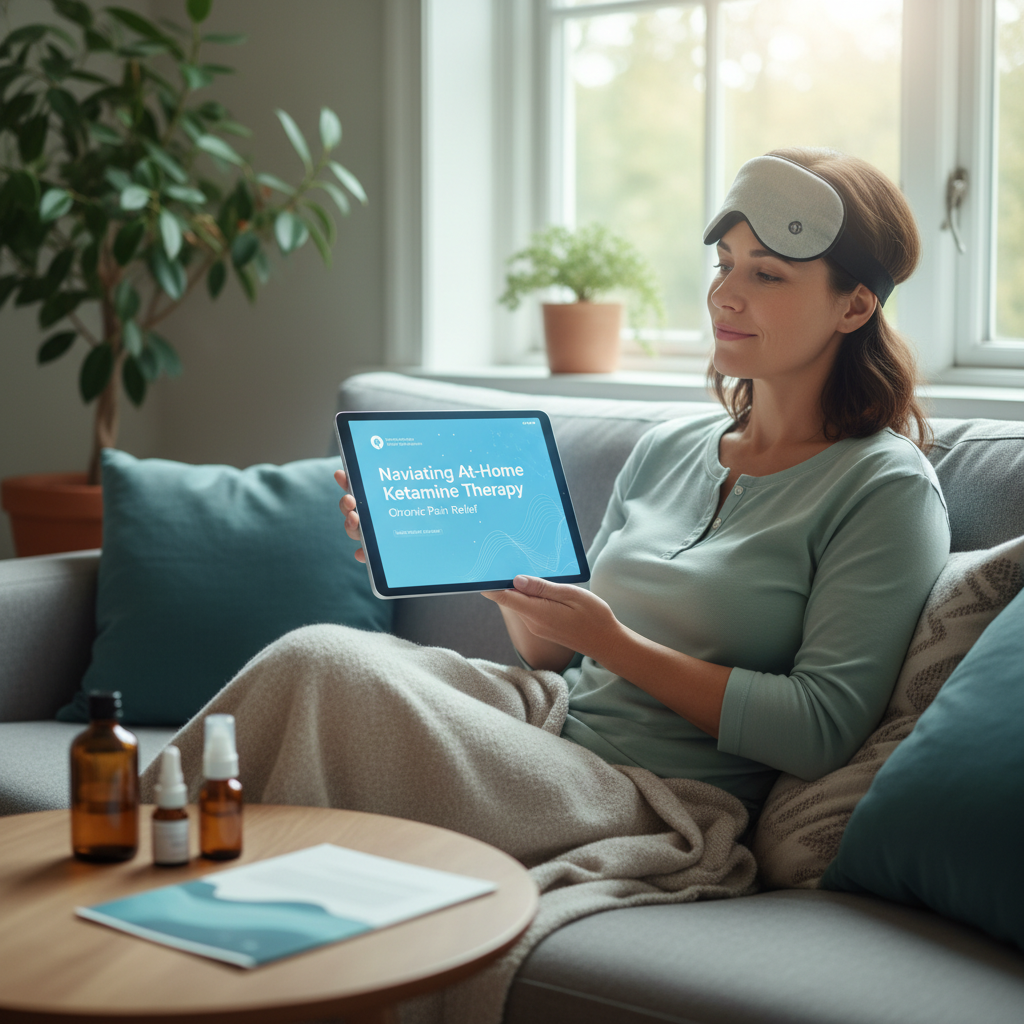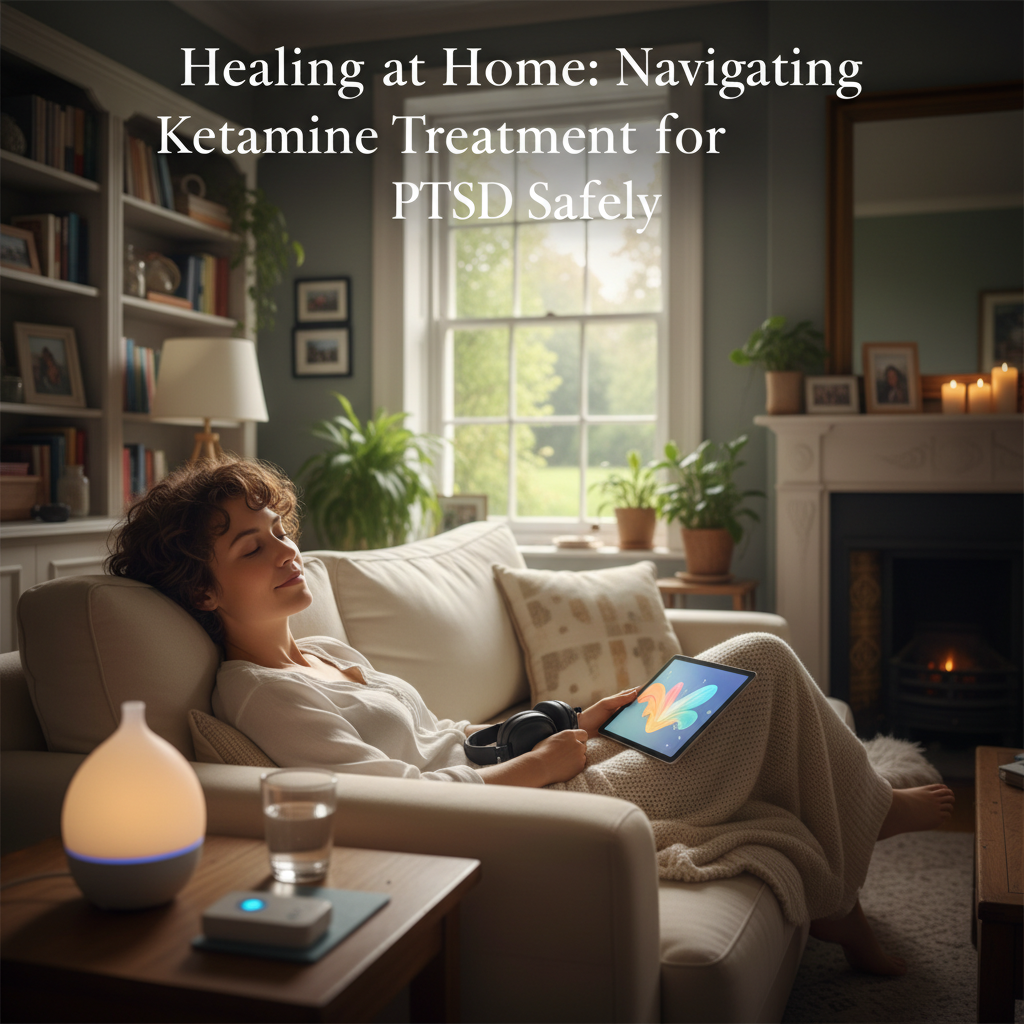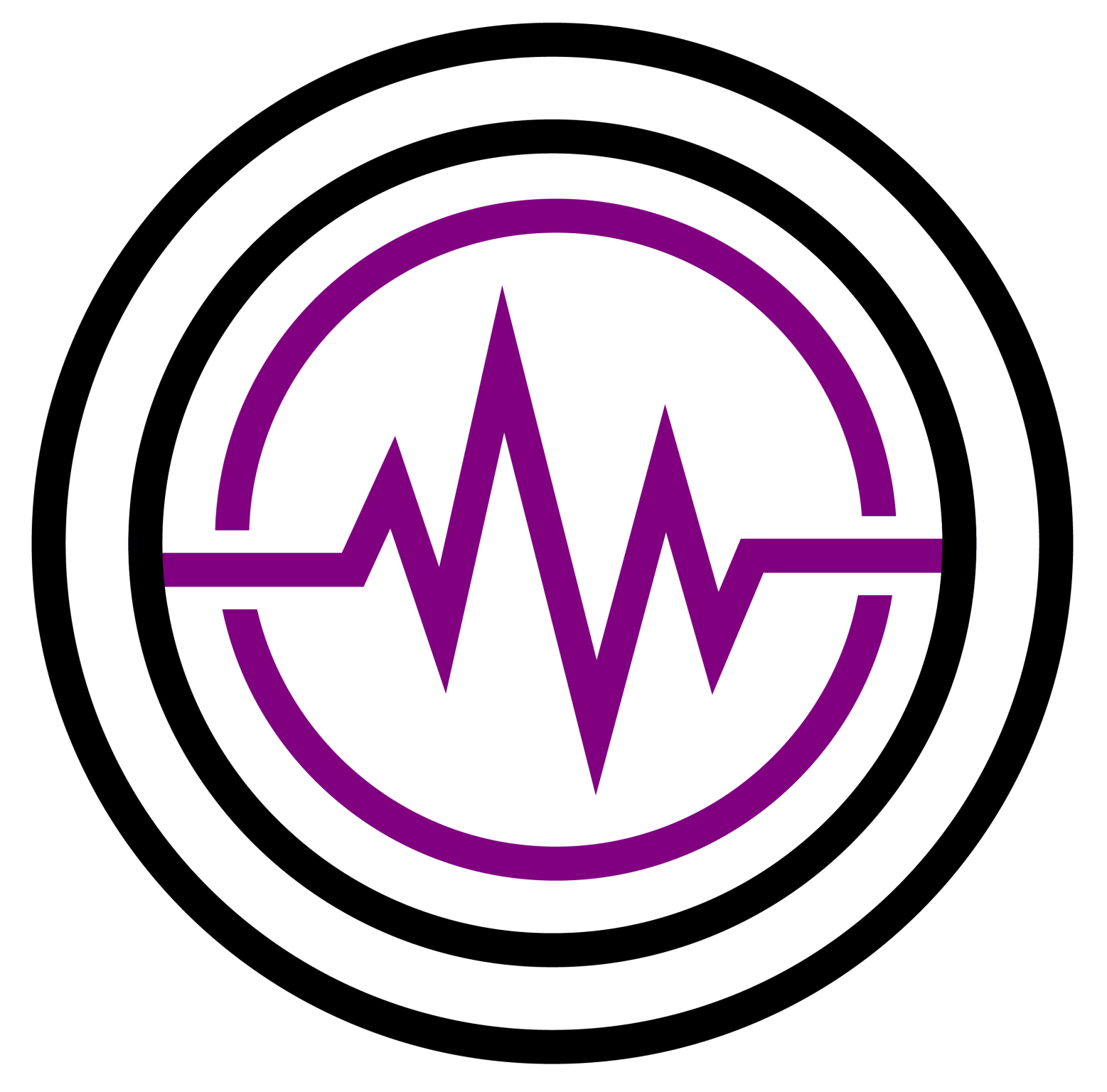Exploring Safety, Efficacy, and Ethical Considerations for Healing
Quick Summary / Key Takeaways
- Safety is paramount; professional guidance is crucial even for “at-home” experiences, which often involves telemedicine or clinical oversight for preparation and integration.
- Not all substances are equal, nor is their legality; understanding the specific psychedelic, its effects, and legal status is foundational before considering any at-home use.
- The therapeutic potential of psychedelics relies heavily on “set and setting,” emphasizing the importance of a prepared mind and a safe, supportive environment.
- Integration is as vital as the psychedelic experience itself, requiring conscious effort to process insights and apply them to daily life for lasting change.
- Despite growing interest, at-home psychedelic therapy remains largely unregulated and often illegal, necessitating thorough research and caution regarding legal implications and risks.
Introduction
The idea of ‘at-home psychedelic therapy’ is sparking widespread curiosity, emerging from the shadows of counterculture into mainstream discourse as a potential frontier for mental wellness. This isn’t just about recreational use; it’s about intentional healing, often under the careful guidance of professionals, even if the actual ‘journey’ happens within the comfort of one’s own space. When we talk about at-home therapy, we’re not suggesting unsupervised experimentation. Instead, it often involves a sophisticated blend of telemedicine, virtual guidance, and carefully managed preparation and integration sessions that bookend a guided experience. It’s an approach that seeks to leverage the profound insights psychedelics can offer, but with a foundational layer of safety and therapeutic intent. However, navigating this landscape requires a keen understanding of its complexities. The legal status of various substances, the critical importance of ‘set and setting,’ and the often-overlooked necessity of post-experience integration are all vital considerations. Without proper knowledge and preparation, the potential for therapeutic breakthrough can quickly turn into a fraught or even harmful experience. This comprehensive guide is designed to illuminate the path forward, addressing the critical questions around safety, legality, preparation, and the often transformative process of integration. Our aim is to equip you with the knowledge to approach this nascent field with both hope and healthy skepticism, prioritizing your well-being above all else.
Common Psychedelics for Therapeutic Exploration (At-Home Context)
| Substance | Legal Status (US) | Typical Duration | Primary Therapeutic Use |
|---|---|---|---|
| Psilocybin (Mushrooms) | Decriminalized/Illegal | 4-6 hours | Depression, Anxiety, PTSD, End-of-Life Distress |
| Ketamine (Oral/Nasal) | Prescription Only | 1-2 hours | Depression, Chronic Pain, PTSD (under supervision) |
| MDMA (Illicit) | Illegal | 4-6 hours | PTSD, Relationship Counseling (research contexts) |
| Cannabis (High-Dose) | Varies by State | 2-4 hours | Anxiety, Pain Management, Mindfulness Enhancement |
Essential Components for a Supported Psychedelic Home Session
| Component | Description | Role in Therapy | Risk Mitigation |
|---|---|---|---|
| Preparation | Intake, intention setting, safety planning with guide | Builds trust, clarifies goals for the journey | Minimizes anxiety, addresses contraindications proactively |
| Sitter/Guide | Sober, trusted individual or professional present | Provides emotional support, ensures physical safety | Handles emergencies, prevents self-harm or risky behavior |
| Environment (Set & Setting) | Safe, comfortable, quiet, and private space | Profoundly influences the nature of the experience | Reduces external stimuli, ensures comfort and privacy |
| Integration | Post-session processing, journaling, therapy | Translates insights into lasting behavioral change | Prevents re-traumatization, fosters sustainable growth |
Application Preparation Checklist
- Thoroughly research legal status and potential risks of chosen substance.
- Establish clear intentions for the experience and desired outcomes.
- Secure a trusted, sober guide or sitter for the entire duration.
- Prepare a safe, quiet, and comfortable environment (“setting”) at home.
Post-Arrival Checklist
- Engage in reflective journaling immediately after the experience.
- Discuss insights with a therapist or trusted integration coach.
- Implement small, actionable steps derived from your revelations.
- Prioritize self-care: mindfulness, nature, healthy routines, and sleep.
Table of Contents
Section 1: Understanding At-Home Psychedelic Therapy
- What exactly is “at-home psychedelic therapy”?
- How does it differ from traditional in-clinic psychedelic treatments?
- Which psychedelic substances are typically considered for at-home use?
Section 2: Safety, Legality, and Ethical Considerations
- What are the primary safety concerns for at-home psychedelic sessions?
- Is at-home psychedelic therapy legal in the United States?
- What role does a ‘sitter’ or guide play in an at-home session?
- Who is a suitable candidate for at-home psychedelic therapy?
Section 3: Preparation: Set, Setting, and Support
- What does “set and setting” mean in the context of at-home therapy?
- How do I prepare my mental ‘set’ for an at-home psychedelic experience?
- What environmental factors are crucial for a safe ‘setting’ at home?
- How do I choose and prepare a reliable sitter or guide for my session?
Section 4: The Experience and Integration
- What can I expect during an at-home psychedelic experience?
- How important is integration after an at-home psychedelic session?
- What are effective strategies for integrating psychedelic insights into daily life?
- When should I seek professional help after an at-home psychedelic experience?
Frequently Asked Questions
Section 1: Understanding At-Home Psychedelic Therapy
FAQ 1: What exactly is “at-home psychedelic therapy”?
At-home psychedelic therapy typically refers to therapeutically guided psychedelic experiences conducted in a client’s private residence, often involving telemedicine for preparation and integration. It differs from recreational use by emphasizing intentional healing, structured guidance, and a focus on psychological integration. While the journey itself occurs at home, professional oversight, either virtual or through a nearby sitter, is critical for safety and efficacy. This model aims to combine the comfort of a familiar environment with the therapeutic structure of clinical care.
FAQ 2: How does it differ from traditional in-clinic psychedelic treatments?
At-home psychedelic therapy offers the comfort and familiarity of one’s personal environment, which can reduce anxiety and foster deeper relaxation, a key component for profound experiences. In contrast, in-clinic treatments provide a highly controlled medical setting with immediate access to professional medical and psychological support. While clinics offer direct supervision and a sterile environment, the home setting can feel less clinical, allowing for a more personalized and intimate journey, often facilitated by virtual professional support. However, in-clinic settings are generally preferred for higher-dose or less familiar substances.
FAQ 3: Which psychedelic substances are typically considered for at-home use?
The most commonly discussed substance for at-home psychedelic therapy, particularly in legally sanctioned contexts, is ketamine, often administered orally or intranasally with telemedicine guidance. Psilocybin (from ‘magic mushrooms’) is also explored at home in areas where it’s decriminalized or in underground settings, though less formally regulated. High-dose cannabis can also be used therapeutically at home. Other substances like MDMA are primarily restricted to research settings, making at-home use illegal and highly risky due to lack of medical oversight.
Section 2: Safety, Legality, and Ethical Considerations
FAQ 4: What are the primary safety concerns for at-home psychedelic sessions?
Primary safety concerns for at-home psychedelic sessions include the risk of adverse psychological reactions like panic or paranoia, especially without immediate professional intervention, and the potential for physical harm if the individual becomes disoriented. The legal status of most psychedelics also presents significant risks, including prosecution. Another concern is the purity and dosage of unregulated substances, which can lead to overdose or unexpected effects. Proper screening for contraindications, such as certain mental health conditions or medications, is often missed without medical oversight.
FAQ 5: Is at-home psychedelic therapy legal in the United States?
The legality of at-home psychedelic therapy in the United States is complex and varies significantly by substance and jurisdiction. Ketamine is currently the only psychedelic legally available for at-home use via prescription under medical supervision, typically through telehealth platforms. Psilocybin and MDMA remain Schedule I controlled substances federally, though some cities and states have decriminalized psilocybin, reducing penalties but not making it fully legal. Unauthorized at-home use of Schedule I substances carries severe legal risks. Always consult local laws and a legal professional.
FAQ 6: What role does a ‘sitter’ or guide play in an at-home session?
A ‘sitter’ or guide in an at-home psychedelic session provides crucial support by ensuring the participant’s physical safety and offering emotional containment during potentially challenging experiences. Their role is to be a grounded, sober presence, creating a secure environment without directing the experience itself. They monitor the participant’s well-being, manage the setting, and are prepared to respond to any unforeseen circumstances, allowing the individual to surrender to the journey. This person acts as a guardian, not a therapist, unless they are a trained professional.
FAQ 7: Who is a suitable candidate for at-home psychedelic therapy?
Suitable candidates for at-home psychedelic therapy are typically individuals with stable mental and physical health, screened for contraindications such as severe cardiovascular issues, active psychosis, or bipolar disorder. They should possess a strong support system, a clear intention for healing, and a willingness to engage in the preparation and integration phases. Often, candidates are those already in therapy or seeking to deepen their existing therapeutic work. At-home therapy is not for first-time psychedelic users or those without prior experience in altered states, due to inherent risks.
Section 3: Preparation: Set, Setting, and Support
FAQ 8: What does “set and setting” mean in the context of at-home therapy?
“Set and setting” are foundational principles in psychedelic therapy, referring to the participant’s mindset (“set”) and the physical environment (“setting”) in which the experience takes place. ‘Set’ encompasses one’s intentions, expectations, mood, and mental state before and during the session. ‘Setting’ refers to the physical space, people present, and overall atmosphere. Both are critically important as they profoundly influence the nature and outcome of a psychedelic experience, dictating whether it’s challenging or transformative. For at-home therapy, you have direct control over both.
FAQ 9: How do I prepare my mental ‘set’ for an at-home psychedelic experience?
Preparing your mental ‘set’ involves clarifying your intentions, engaging in self-reflection, and cultivating a state of openness and trust. Begin by journaling about what you hope to gain or understand, addressing any fears or anxieties. Practice mindfulness, meditation, or gentle yoga in the days leading up to the session to calm your nervous system. Ensure you are well-rested and free from major external stressors. Approach the experience with curiosity and a willingness to surrender to whatever arises, without rigid expectations, fostering a mindset of acceptance.
FAQ 10: What environmental factors are crucial for a safe ‘setting’ at home?
Creating a safe ‘setting’ at home involves curating a clean, quiet, and comfortable space free from interruptions or potential hazards. Ensure the room is tidy, has comfortable seating or lying options, and control lighting (dim, natural, or indirect) and sound (calming music or silence). Inform housemates or family about your need for undisturbed privacy. Have essential items like water, a blanket, and a journal readily accessible. Eliminating sudden noises, bright lights, or unexpected visitors is paramount to maintain a sense of security and allow for deep exploration.
FAQ 11: How do I choose and prepare a reliable sitter or guide for my session?
Choosing a reliable sitter or guide involves selecting someone you trust deeply, who is sober, empathetic, and has a grounded presence, ideally with some experience in altered states. Discuss your intentions and any potential sensitivities or triggers with them beforehand, ensuring they understand their role is supportive, not directive. Brief them on basic first aid and what to do in case of an emergency. For substances like ketamine, a licensed professional guide (in-person or virtual) is highly recommended. Clear communication and a shared understanding of boundaries are essential.
Section 4: The Experience and Integration
FAQ 12: What can I expect during an at-home psychedelic experience?
During an at-home psychedelic experience, you can expect profound alterations in perception, thought patterns, and emotional processing, with the specific effects varying by substance and dose. You might experience vivid visuals, deep introspection, shifts in perspective, or intense emotional releases. Time perception can become distorted, and a sense of ego dissolution or unity with the universe may occur. It’s crucial to approach the experience with an open mind, as challenging moments can arise but often hold significant therapeutic potential. Having a sitter and a safe environment helps navigate these shifts.
FAQ 13: How important is integration after an at-home psychedelic session?
Integration is arguably the most crucial phase of psychedelic therapy, as it involves consciously processing the insights gained during the experience and applying them to daily life for lasting change. Without proper integration, the profound revelations can fade, leaving the individual without tangible benefits. It’s the bridge between an altered state of consciousness and sustainable well-being, helping to rewire neural pathways and shift behaviors. Integration turns a powerful event into a therapeutic process, preventing fleeting insights from becoming just a memory. This often involves therapy, journaling, and mindful practices.
FAQ 14: What are effective strategies for integrating psychedelic insights into daily life?
Effective integration strategies include journaling about the experience, discussing insights with a trusted therapist or integration coach, and engaging in creative expression like art or music. Mindful practices such as meditation, yoga, and spending time in nature can help ground the insights. It’s also vital to identify small, actionable steps derived from your revelations and consistently apply them to your daily routines. For example, if you gained insight into a fear, practice gently exposing yourself to that fear. Consistent effort over weeks or months is key. Building a supportive community can also enhance integration.
FAQ 15: When should I seek professional help after an at-home psychedelic experience?
You should seek professional help immediately if you experience persistent psychological distress, such as severe anxiety, paranoia, psychosis, or dissociation, that doesn’t resolve within a few days after your session. If you feel overwhelmed by the insights, are struggling to integrate the experience, or notice a worsening of pre-existing mental health conditions, professional support is crucial. A licensed therapist or psychiatrist specializing in psychedelic integration can provide guidance and prevent potential long-term issues. Don’t hesitate to reach out if you feel stuck, confused, or distressed.


